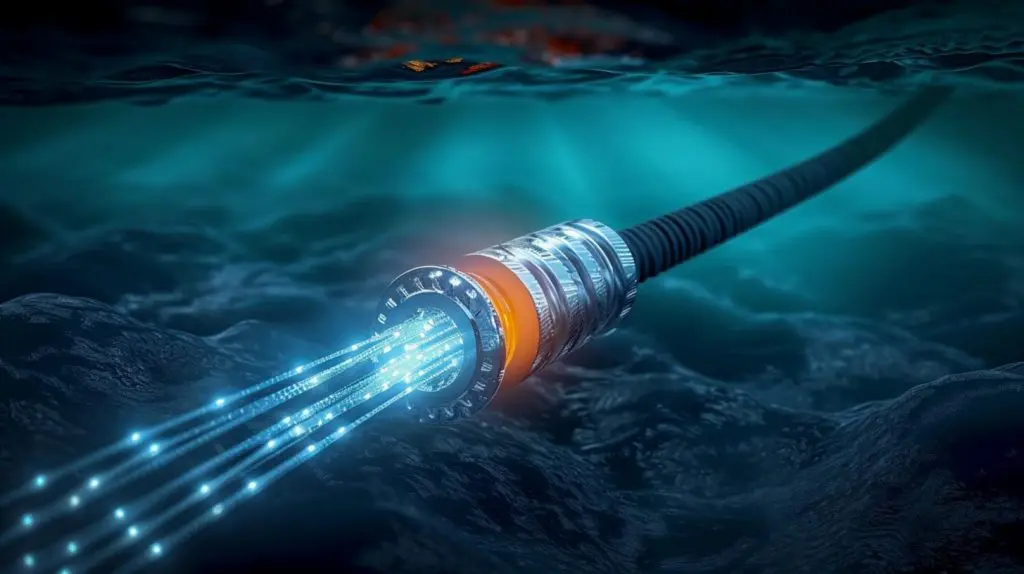advertisement
Google Announces Fibre Optic Cable Connecting Africa, Australia

Google has announced a new fibre optic cable connecting Africa to Australia. Dubbed ‘Umoja,’ it is the first-ever fibre optic route directly connecting the two continents.
“We are excited to announce Umoja, a new fibre optic cable connecting Africa to Australia, and our expanded cybersecurity collaboration with Kenya, furthering our commitment to Africa’s digital transformation,” said Brian Quigley, VP, Global Network Infrastructure, Google Cloud. He added, “We are grateful for the partnership from leaders across Africa and Australia to deliver Africa Connect to people, businesses, and governments worldwide.”
Umoja, Swahili word for unity, joins Equiano in the Africa Connect initiative. It will enable African countries to more reliably connect and the rest of the world. Establishing a new route distinct from existing connectivity routes is critical to maintaining a resilient network for a region that has historically experienced high-impact outages.
advertisement
“I am delighted to welcome Google’s investment in digital connectivity, marking a historic milestone for Kenya, Africa, and Australia. The new intercontinental fibre optic route will significantly enhance our global and regional digital infrastructure. This initiative is crucial in ensuring the redundancy and resilience of our region’s connectivity to the rest of the world, especially in light of recent disruptions caused by cuts to sub-sea cables. By strengthening our digital backbone, we are not only improving reliability but also paving the way for increased digital inclusion, innovation, and economic opportunities for our people and businesses,” noted President William Ruto.
Anchored in Kenya, the Umoja cable route will pass through Uganda, Rwanda, the Democratic Republic of the Congo, Zambia, Zimbabwe, and South Africa, including the Google Cloud region, before crossing the Indian Ocean to Australia. Umoja’s terrestrial path was built in collaboration with Liquid Technologies to form a highly scalable route through Africa, including access points that will allow other countries to take advantage of the network.
“Access to the latest technology, supported by reliable and resilient digital infrastructure, is critical to growing economic opportunity. This is a meaningful moment for Kenya’s digital transformation journey and the benefits of today’s announcement will cascade across the region,” said Meg Whitman, US Ambassador to Kenya.
advertisement
Michelle Rowland MP, Australian Minister for Communications added that “Diversifying Australia’s connectivity and supporting digital inclusion across the globe are both incredibly important objectives, and Google’s Umoja cable will help to do just that. Australia welcomes Google’s investment and congratulates all those involved in undertaking this crucial initiative.”
Strengthening Cybersecurity With Cloud-Powered Solutions
In addition to today’s infrastructure announcement, Google will sign a Statement of Collaboration with Kenya’s Ministry of Information Communications and The Digital Economy to accelerate joint efforts in cybersecurity, growing data-driven innovation, digital upskilling, and responsibly and safely deploying AI for societal benefits. As part of the collaboration, Google Cloud and Kenya intend to work on strengthening the Citizen platform.
According to a report by the International Finance Corporation, Africa’s internet economy has the potential to grow to $180 billion by 2025 – 5.2 per cent of the continent’s GDP. Investments like Umoja, coupled with developing talent who can benefit from, and add to, this growing digital economy, help citizens access government services and critical information while enabling businesses to thrive and generate durable economic growth for the local economy.
advertisement
The legendary Strive Masiyiwa, Chairman and Founder of Liquid, summarised it best. “Africa’s major cities including Nairobi, Kampala, Kigali, Lubumbashi, Lusaka, and Harare will no longer be hard-to-reach endpoints remote from the coastal landing sites that connect Africa to the world. They are now stations on a data superhighway that can carry thousands of times more traffic than currently reaches here. I am proud that this project helps us deliver a digitally connected future that leaves no African behind, regardless of how far they are from the technology centres of the world.”